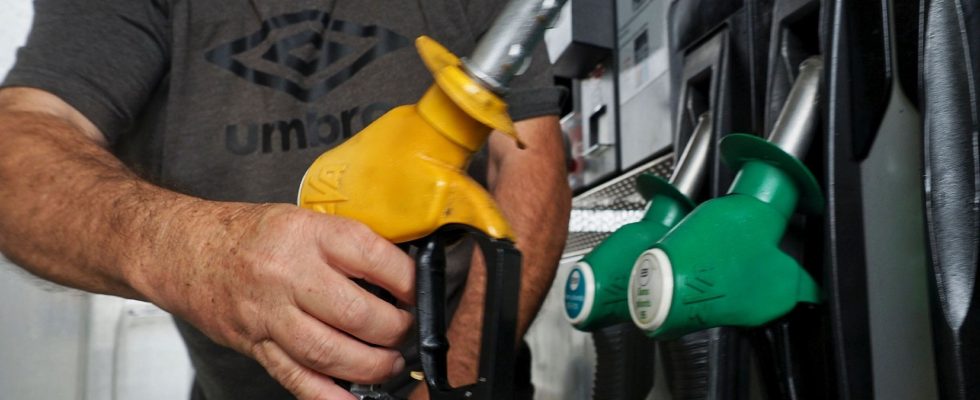“There will be a small impact but it will be light.” Wednesday September 27, on RTL the general director of Système U, Dominique Schelcher, warned that we should not expect a spectacular drop in prices at the pump. The sale of fuel “at cost price” decided with the government on Tuesday September 26, will represent “one to two euros per full tank” of gasoline, representatives of large-scale distribution estimated.
Less than a week after these announcements, a (small) drop in fuel prices was noted. This is on average one to two cents per liter, reports this Monday, October 2 Le Figaro. This slight decline can therefore be explained by the implementation of these “at cost” fuel sales operations.
In detail, according to the calculations of Figaro, while unleaded 98 was worth more than 2.0202 euros at the start of last week, it fell to 2.0055 euros per liter on Sunday, a decrease of less than two cents. Unleaded 95 also went from 1.9722 to 1.9568 euros while diesel costs 1.9389, compared to 1.9526 euros before the start of the first operations at cost price.
The most significant decline concerns the E10 which lost more than two cents, going from 1.9513 to 1.9304 euros, and remains the cheapest on the market, according to these figures from public data available on the site prix-carburants.gouv.frwhich centralizes declarative data from service stations.
An operation which “is not going to be spectacular”
The Carrefour and Leclerc brands have committed to selling fuel “at cost” every day. Casino, Cora and Intermarché will carry out these operations two weekends per month while Système U and Auchan will carry out these operations at least one weekend per month. As for independents or oil groups, Total remains the only one to offer a discount with a price cap of 1.99 euros for all fuels “as long as prices remain high”.
“Making cost price here is not going to be spectacular since we are already at low prices all year round,” declared Dominique Schelcher, estimating that this represents a drop “of one or two cents per liter, that means one euro for a full tank. “Our margin is 2 to 3%, so it’s 2 to 6 cents per liter”, or “one or two euros per full tank” of gasoline, Michel-Edouard Leclerc, president of the strategic committee of the Leclerc distribution group.
A decline that must be nuanced
As recalled Le Figaro, the small drop in fuel prices that has just been observed must be qualified. These figures are in fact only a national average. Large-scale retail service stations also represent a minority of points of sale, and, moreover, not all of these stations have implemented promotions this weekend.
Failing to convince them to sell at a loss, the government managed to get fuel distributors to sell it “at cost” during “nearly 120,000 operations” in 4,000 stations until the end of the year. The distributors’ commitment could extend into 2024, the government told the press.
These cost price operations could, however, have perverse effects on the network of independent stations, which do not depend on large French distributors but on foreign operators such as Esso or BP, who continue to sell at market price, stressed to AFP Francis Pousse, president of the Mobilians professional union. Of around 2,400 of them, “the gap will widen” in terms of price and therefore attractiveness and “we therefore risk damaging part of the profession”, fears Francis Pousse.
Furthermore, Prime Minister Elisabeth Borne has requested a fact-finding mission to find out how the refiners’ margin is constituted, announced this Monday, October 2 on Franceinfo Olivia Grégoire, the Minister Delegate in charge of Small and Medium Enterprises, Commerce, Crafts and Tourism.
“The real question that arises is how the margin of the refiners and the Total refiner is constituted,” declared Olivia Grégoire. “The Prime Minister decided last weekend to entrust the General Inspectorate of Finance with a mission, to investigate how the price of Total and refiners is constituted,” explained Olivia Grégoire. “We will have these very precise elements before the end of the year and that will allow us to see whether or not there is an excess margin.”
